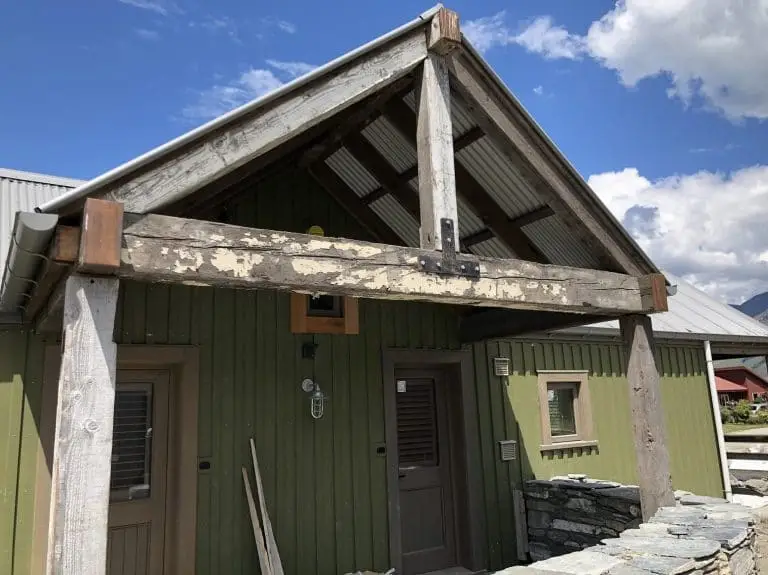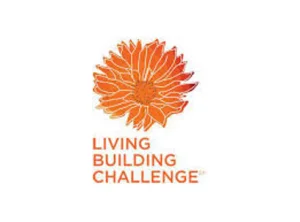The Green Building movement in New Zealand is beginning to take off. The public demand is increasing for sustainable and efficient buildings, especially in public and government developments. There are a few different awards in which Green building businesses aspire to achieve; Green Star Rating and Living Building Challenge (LBC) are two of the most prominent. Matthew from Interlink was fortunate enough to visit a prominent LBC site in November. Here is his view on the Glenorchy Campground and its designs to meet the LPC criteria.
‘‘Wow” is a good start to try and explain what the architects and client are accomplishing at the ‘Glenorchy Camp’ construction project. Now you might think what can be so amazing about a new camping complex. Well, the Glenorchy Camp project really must be seen to understand the objective of the project and the intricacies of also aiming to meet the LBC targets i.e.. the use of sustainable and reused materials, energy and heat efficiency, on site water use and treatment of clean and black water. Minimal or zero use of any products that could damage the environment, including the sourcing and manufacturing process. The LBC criteria is a separate novel in itself to explain.

A brief background about the Glenorchy Camp. The old Glenorchy camping ground came up for sale and rather than a developer take hold of this pristine land, a retired American couple who were visiting Queenstown at the time of the sale (which was probably not initially thought of as much better) thought a little slice of New Zealand in their portfolio would be great. The American couple in their seventies were also very accomplished Camp owners in the USA, where big camp experiences are the norm. However, Glenorchy was to be something quite different. This American couple had bigger and better thoughts and as part of their philanthropy they asked local architects to design something very special. The new camp would be high tech but with an old rustic design to meet if not exceed the LBC criteria. For example, the walls are 200mm wooden cavities with only the best insulation, the roof space appeared to be approximately 600m thick with again all the very best insulation, but ALL the products used needed to be sustainably sourced and environmentally sound, to meet the LPC criteria.
Then from my perspective, the best features were the visual surfaces being old rustic timbers, recycled from Dunedin warehouses and demolition projects, the landscaping timber is from the old Alexandra stock yards being Jarrah imported in the 80’s. There are timber and beams in this project that one cannot easily obtain, but they have achieved this via donations from other businesses and good old-fashioned hard work. The main hall has what appears to be 400 x 150mm wooden rustic beams in the ceiling. This type of timber just cannot be found any more, yet the client and architect have sourced, and I can only anticipate have paid to have these great big timbers in their roof design.
Technology wise I am not up with the play as much as others, but there are sensors on al the windows and doors, the solar panels are discretely placed in transparent roof tiles, light controlled sensors are all over the buildings, temperature controls and automatically adjusting windows keep the temperature inside just right.
A big new kitchen was just being completed and had high quality appliances and surrounds with amazing tiles, hand made from Matakana (NZ) on the walls. Outside is natural, local paradise stone in a well laid out functional landscape design, allowing ‘yes’ good old traditional tenting on site amongst the new living houses. All still with rustic original design. On site underground toilet composting facilitates are worth the tour. Then there are intricate details right down to the cute wooden branch clothes and shoe hangers, door knobs, and old-style rustic railway lamps. It really is a place to visit yourself one day, and to be amazed by what this couple, their architects and skilled New Zealand trades people have achieved.
A huge hats off and a big congratulations to the project team and all involved the the Glenorchy Campground LBC project.”
Briefly ‘Living Building Challenge’ (LBC) is an advanced building certification which is world renowned. It is a certification that represents a totally sustainable and socially sound, built environment. In order to achieve this certification, the architect/builder needs to comply with some very specific regulations or ‘imperatives’. These imperatives are structured within 7 ‘Petals’ (Place, Water, Energy, Health and Happiness, Materials, Equity and Beauty). For more information please visit https://living-future.org/lbc/ or have a chat with the team at Interlink Ltd today!



